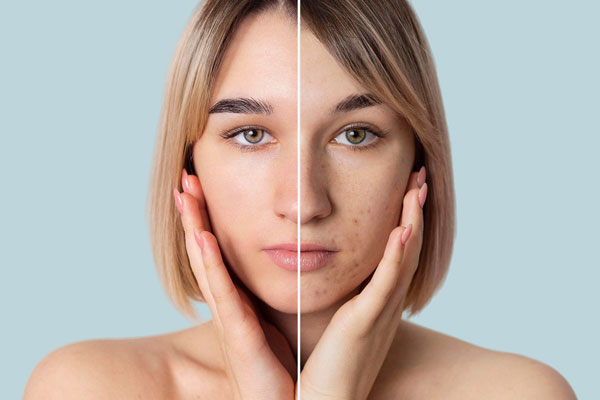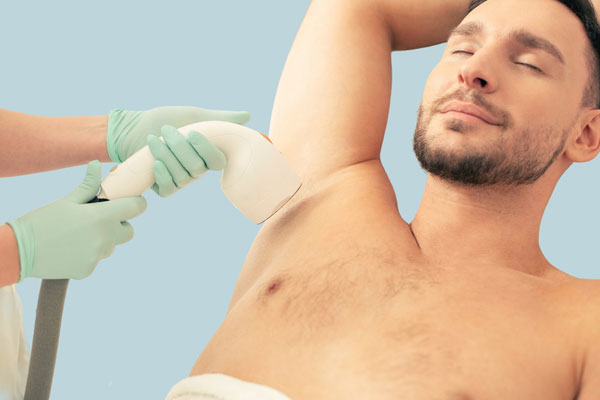Overview
What are fibromas?
Fibromas are non-cancerous tumours made up of fibrous or connective tissue. They can occur almost anywhere in and on your body. Most fibromas don’t cause symptoms, and you may not even know you have one. Fibromas occur for various reasons, but some have unknown causes. Treatment isn’t usually necessary unless it’s interfering with your life or causing symptoms.
Symptoms and Causes
How fibromas appear
Fibromas can vary in appearance depending on their type and location:
- Dermatofibromas: Firm, raised nodules, often brown or tan, typically found on the skin of the lower legs.
- Skin tags (acrochordons): Soft, flesh-coloured growths that hang from the skin, commonly found in areas where skin rubs together, such as the neck, armpits, or groin.
- Plantar fibromas: Firm lumps that develop in the connective tissue of the foot, often causing discomfort when walking.
- Oral fibromas: Nodules in the mucous membranes of the mouth, usually due to chronic irritation.
- Ossifying fibromas: Rare, non-cancerous tumours made of bone tissue that form within connective tissue, most commonly affecting the jawbones.
Why fibromas develop
The exact cause of fibromas is not fully understood, but contributing factors may include:
- Abnormal cell growth: Overgrowth of fibrous tissue cells can lead to fibroma formation.
- Genetics: Some fibromas are associated with genetic conditions, such as neurofibromatosis type 1 (NF1), which can cause multiple fibromas to develop.
- Chronic irritation or trauma: Repeated friction or injury to an area can stimulate fibroma development, especially in the skin or oral mucosa.
- Age and hormonal changes: Certain fibromas, like uterine fibroids, are more common in women of reproductive age and may be influenced by hormonal factors.
Diagnosis and Tests
Diagnosis typically involves a thorough medical history and physical examination. Your healthcare provider may inquire about:
- The duration and growth pattern of the fibroma
- Any associated symptoms, such as pain or changes in size
- Family history of fibromas or related conditions
Additional tests
Depending on the type and location of the fibroma, further diagnostic tests may include:
- Imaging studies: X-rays, ultrasound, MRI, or CT scans to assess the size, location, and characteristics of the fibroma.
- Biopsy: A small sample of tissue may be removed and examined under a microscope to confirm the diagnosis and rule out malignancy.
- Blood tests: In some cases, to evaluate for underlying conditions or hormonal influences.
Management and Treatment
Most fibromas do not require treatment unless they cause symptoms such as pain or discomfort, interfere with normal bodily functions, have a noticeable cosmetic impact, or show signs of rapid growth or other concerning changes.
Treatment options
Treatment varies based on the type, location, and symptoms associated with the fibroma:
- Observation: If the fibroma is asymptomatic and not causing issues, regular monitoring may be sufficient.
- Medications: For certain types, such as uterine fibroids, medications may be used to manage symptoms or shrink the fibroma.
- Surgical removal: If the fibroma is problematic, surgical options may include:
- Excision: Removal of the fibroma through a surgical procedure.
- Cryotherapy: Freezing the fibroma to destroy the tissue.
- Laser therapy: Using focused light to remove or shrink the fibroma.
- Electrosurgery: Using electrical currents to remove the fibroma.
- Supportive care: For fibromas causing discomfort, measures such as orthotic devices, physical therapy, or pain management strategies may be recommended.
Aftercare
Post-treatment care is essential for proper healing and to monitor for any recurrence. This includes attending follow-up appointments with your healthcare provider to assess recovery and detect any new fibromas, keeping the surgical site clean and following wound care instructions to prevent infection, and making lifestyle adjustments as needed, such as avoiding activities that could irritate the treated area or cause trauma.
Outlook/Prognosis
The prognosis for individuals with fibromas is generally favourable. Most fibromas are benign, meaning they are non-cancerous and usually do not pose a significant health risk. While some types, such as dermatofibromas, may recur after removal, this is typically not harmful. Complications are rare, but fibromas that grow large or press on surrounding tissues can occasionally cause pain or affect normal function.
Prevention
While it may not be possible to prevent all fibromas, certain measures can reduce the risk:
- Avoiding trauma: Minimising injury or irritation to areas prone to fibroma development.
- Managing underlying conditions: For individuals with genetic conditions like NF1, regular monitoring and early intervention can help manage fibroma growth.
- Healthy lifestyle: Maintaining a balanced diet and regular exercise to support overall health and potentially reduce the risk of certain fibromas, such as uterine fibroids.






